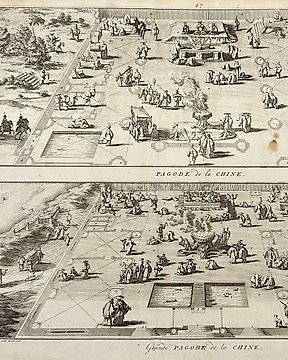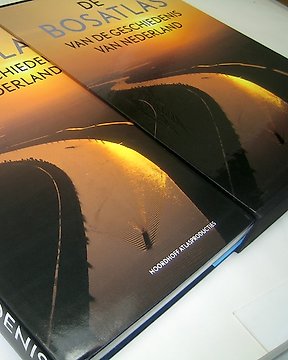Everything worked well
Zobacz tłumaczenieHolandia, Plan miasta - Leeuwardena / Franekera; Braun / Hogenberg - Lewardum. Occidentalis Frisiae Opp: 1580. / Franicher, Nobiliu hominum, in Frisia Occidentali, ut - 1581
Nr 85467375





In goede conditie.
Voldoende marges. Met middenvouw, als uitgegeven. Een gaatje op de middenvouw in de bovenste marge.
Randen van het papier zijn vlekkig en hebben kleine scheurtjes.
Verso blank.
COMMENTARY BY BRAUN: "Leeuwarden lies in West Friesland. Within this county, it is a special town that can boast well-appointed townhouses, but that is also completely surrounded by the river and with its moats and fortified castle can therefore withstand all enemy attacks."
This bird's-eye plan from the year 1580 depicts Leeuwarden, once the seat of the powerful governor of Friesland. On the left-hand edge of the town, a large church is accompanied by a freestanding late Gothic tower, the unfinished Oldehove, still standing today. The Gothic Grote Kerk or Jacobijnerkerk is located in the upper half of the town, while the weight house on the Waagplein is clearly visible in the lower half. In the 15th century, Leeuwarden enjoyed supraregional importance as a river port, a position it lost in the late 16th and 17th centuries, however, as its access to the sea silted up. verschenen in de wereldberoemde stedenatlas "Civitates Urbis Terrarum" van Georg Braun & Frans Hogenberg.
COMMENTARY BY BRAUN: "Two miles from Leeuwarden lies Franeker, where many self-assured men live, since they valiantly resisted a siege by those staging a revolt against their then sovereign, the Duke of Saxony, and were consequently rewarded with stately privileges and freedoms. It has numerous grazing pastures for cattle as is usual in Friesland, but the land is interspersed with many lakes, pools and marshes."
Franeker, a former university town whose students included René Descartes, lies between Harlingen and Leeuwarden. It is seen here in a bird's-eye view, surrounded by a ring canal and crossed by a number of other canals. Founded around AD 800 as a Carolingian fortress, in the Middle Ages and the early modern era, Franeker developed into an impressive city; in the 15th century, it was chosen by Albert of Saxony as his primary residence. Rising from the centre of the main market square is the late Gothic Martinikerk. Bottom left, on the longest of the canals, is the town hall. (Taschen)
In goede conditie.
Voldoende marges. Met middenvouw, als uitgegeven. Een gaatje op de middenvouw in de bovenste marge.
Randen van het papier zijn vlekkig en hebben kleine scheurtjes.
Verso blank.
COMMENTARY BY BRAUN: "Leeuwarden lies in West Friesland. Within this county, it is a special town that can boast well-appointed townhouses, but that is also completely surrounded by the river and with its moats and fortified castle can therefore withstand all enemy attacks."
This bird's-eye plan from the year 1580 depicts Leeuwarden, once the seat of the powerful governor of Friesland. On the left-hand edge of the town, a large church is accompanied by a freestanding late Gothic tower, the unfinished Oldehove, still standing today. The Gothic Grote Kerk or Jacobijnerkerk is located in the upper half of the town, while the weight house on the Waagplein is clearly visible in the lower half. In the 15th century, Leeuwarden enjoyed supraregional importance as a river port, a position it lost in the late 16th and 17th centuries, however, as its access to the sea silted up. verschenen in de wereldberoemde stedenatlas "Civitates Urbis Terrarum" van Georg Braun & Frans Hogenberg.
COMMENTARY BY BRAUN: "Two miles from Leeuwarden lies Franeker, where many self-assured men live, since they valiantly resisted a siege by those staging a revolt against their then sovereign, the Duke of Saxony, and were consequently rewarded with stately privileges and freedoms. It has numerous grazing pastures for cattle as is usual in Friesland, but the land is interspersed with many lakes, pools and marshes."
Franeker, a former university town whose students included René Descartes, lies between Harlingen and Leeuwarden. It is seen here in a bird's-eye view, surrounded by a ring canal and crossed by a number of other canals. Founded around AD 800 as a Carolingian fortress, in the Middle Ages and the early modern era, Franeker developed into an impressive city; in the 15th century, it was chosen by Albert of Saxony as his primary residence. Rising from the centre of the main market square is the late Gothic Martinikerk. Bottom left, on the longest of the canals, is the town hall. (Taschen)
- 7
- 0
- 0
Niets aan toe te voegen.
Zobacz tłumaczenieZending snel en uitstekend goed verpakt geleverd!
Zobacz tłumaczenieals beschreven in goede staat snel verstuurd en goed ingepakt. dank!
Zobacz tłumaczenie- 7
- 0
- 0
Everything worked well
Zobacz tłumaczenie








